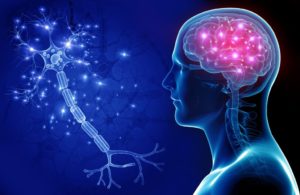 Neurology refers to an area of medicine that focuses on the nervous system and its diseases.
Neurology refers to an area of medicine that focuses on the nervous system and its diseases.
The Nervous System
The nervous system can be thought of as the electrical system of the body. Its proper functioning and health is critical to every system of the body as well as its survival.
Its operation can by broken down into the following steps:
- It receives information about changes in the body and the external environment through the sense organs and nerve endings. It sends this information to the spinal cord and brain.
- The brain processes this information and determines an appropriate response.
- The brain sends out commands to muscles and glands to carry out the desired response.
The nervous system is divided into two parts:
- The central nervous system which consists of the brain and spinal cord.
- The peripheral nervous system which consists of all the nervous system except the brain and spinal cord.
The nerve cell (neuron) is the main unit of the brain and nervous system and is responsible for transmitting the electrical impulses necessary to carry out the process mentioned above.
Diseases that affect the nervous system
Epilepsy – The most common neurological disorder- characterized by repetitive abnormal electrical impulses in the brain resulting in seizures.
Parkinson’s disease – A chronic degenerative disease of the central nervous system – affects brain function, memory, behavior, and movement.
Alzheimer’s disease – A chronic, progressive, cognitive disorder – most common form of dementia.
Multiple sclerosis (MS) – A chronic disease of the central nervous system characterized by a decrease in the nervous system’s ability to carry an electrical impulse.
Amyotrophic lateral sclerosis (ALS – Lou Gehrig’s disease) – A chronic degenerative disease in which nerve cells break down, reducing the functionality of the muscles they supply.
Peripheral neuropathy – Nerve damage, usually in the hands and feet that results in weakness, numbness, and pain. These are among the most common but there are several others.
Ultrasound
Ultrasound is a safe, painless, non-invasive method of ruling out, or discovering the presence of disease using sound. In an ultrasound screening, a technician uses a small probe called a transducer and gel placed directly on the skin. High-frequency sound waves travel from the probe through the gel and into the body. The probe collects the sounds that bounce back, and a computer uses those sound waves to create an image. This safe, and effective tool can help with the diagnosis of multiple conditions related to the tissues and organs of the body.
Doctors can use ultrasound to diagnose conditions such as:
Neurological disorders – Ultrasound can be used to detect problems with blood flow to the brain.
Tumors and cysts – An ultrasound can find dense areas of tissue such as tumors or cysts. It shows cysts differently from tumors to help your doctor make a diagnosis.
Cardiovascular issues – Ultrasound can be used to find narrowed blood vessels, blockages to blood flow, or weakened, ballooning areas of the arteries (aneurism).
Infections – Ultrasound can detect the increase in blood flow that often occurs in areas where the infection is present.
Thyroid conditions – Ultrasound can be used to detect thyroid issues such as growths or abnormal activity.
Uterine fibroids – Detection of fibroids (non-cancerous growths in the uterus) and other conditions related to the female reproductive system show up on the ultrasound. An ultrasound can help doctors find the source of pelvic pain and abnormal bleeding.
Monitor Pregnancy – Perhaps the most well-known use of ultrasound, a fetal ultrasound (sonogram) allows a healthcare provider to evaluate a baby’s growth and development and detect possible problems. Abnormalities in size or shape of virtually any organ or tissue of the body.
Neurological screenings that utilize ultrasound include:
- Transcranial Doppler – This will measure the velocity at which blood flows through the arteries of the brain and can help determine the risk for stroke.
- Extracranial Ultrasound – This ultrasound analyzes blood flow in the large arteries of the neck that supply the brain. Ultrasound can detect if these arteries are narrowed or damaged which can lead to stroke.
- Unlike CT scans and x-rays, there is no potentially harmful radiation exposure involved in an ultrasound.
- Because of its safe, effective, painless, non-invasive nature, ultrasound screenings should be a part of everyone’s regular physical examination schedule.
Please have your screening done as soon as possible.
